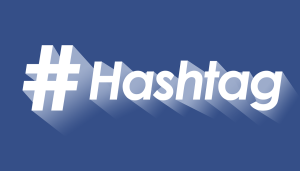 A Hashtag strategy should be in the arsenal of organizations using social media to generate new business. When used properly, incorporating hashtags into your social media posts is a great way to join a conversation and see more engagement. It is also a slippery slope that can make your social media posts look like spam.
A Hashtag strategy should be in the arsenal of organizations using social media to generate new business. When used properly, incorporating hashtags into your social media posts is a great way to join a conversation and see more engagement. It is also a slippery slope that can make your social media posts look like spam.
Follow our hashtag guidelines and you’ll see a quick turnaround in the effectiveness of your social media campaigns.
Hashtags: A Bridge to Larger Conversations
The golden ticket in social media is a high level of engagement. Hashtags allow your social media content to move beyond your existing followers and into a larger conversation – preferably with people who show a similar interest. In today’s social media culture, there are hashtags for just about everything. But not all hashtags are created equal.
As a rule of thumb, the simpler, shorter and more relevant a hashtag is the better it will perform. When creating your social media campaign strategy, consider turning keywords into hashtags. Take the time to generate a list of memorable keywords and conduct a search on your social media accounts to see who is engaging with the content.
All organizations should have an active social media account on these 3 platforms: Twitter, Facebook, and Google+. These platforms handle hashtags well and have valuable communities to promote content for conversions.
Twitter: Where It All Started
The use of hashtags started on Twitter and has grown as the backbone of the platform. The platform also links hashtags to a search of all posts using that hashtag, allowing for easy communication with other users.
According to research by Buddy Media, Twitter responds incredibly well to hashtags as tweets with one or more hashtags have a 21% higher engagement rate1. With Twitter limiting your character limit to 140, it’s always a good idea to remain within this one or two hashtag range per-tweet. The research also found that tweets with more than two hashtags had an engagement rate drop of 17%2.
Expanding Customer Service
In recent years, Twitter has become a major resource for customers and followers to express their reviews about a product or service. Depending on the organization, it’s wise to conduct a branded search on Twitter to see if users are talking about your organization. For service-based organizations, Twitter has become popular as an extension to their customer service.
Facebook: The More Planning the Better
Like Twitter, Facebook also allows users to engage in conversations using hashtags, but is much more delicate in how hashtags are used. Facebook offers more character space than a well-tailored post should have. This can inspire organizations to use multiple hashtags in their post with the intent of greatly expanding their Facebook presence. Don’t fall into this trap, stick to one or two hashtags per-post. Also like Twitter, this can lead to negative results as heavy use of hashtags can look like spam to users.
Another factor to consider are the differences in how users receive information from Facebook and Twitter. Hashtags were originally used to filter posts on Twitter because the platform displays a continuous feed of tweets and retweets in real time. Facebook already filters posts based on your interests. This creates a cultural divide where Facebook doesn’t extend itself to tweets as easily to Twitter.
The key to using hashtags on Facebook is to be consistent. With only one or two hashtags per-post, you’ll want to maximize your presence on highly relevant hashtags. Keep a close watch on your engagement and see how responsive users are to your posts.
Google+: The Center of Google
Google+ is unique in that automatically assigns at least one hashtag based on your content, though you can edit and add your own. It is also much easier to explore hashtags on Google+ as the platform provides you a list of top hashtags related to your post. If you’re manually inserting hashtags, it’s best to use 2 to 3 hashtags in your posts.
Another advantage that Google+ has over other platforms is it allows users to search Google using hashtags. Posts that use a hashtag will appear on the right sidebar, giving your posts the best visibility on Google.
Understanding how social media platforms respond to your hashtags is fundamental to building a higher engagement rate. Keep track of the performance of your hashtags using our Hashtag Counter Tool. The tool automatically pulls any hashtag in your list of tweets and posts to transform your data into valuable information about total likes, shares and clicks.
With a deep history of developing successful digital strategies, Strongpages has generated significant result for clients across all industries. Strongpages offers professional content development services that drive conversions and builds new business. To learn more about how our content development services will lead to more revenue, fill out our form and a content expert will contact you soon!
1 “Twitter Cheat Sheet to Increase Engagement and Followers”. LinchpinSEO. http://linchpinseo.com/infographic-twitter-tweet-cheat-sheet
2 Ibid.
